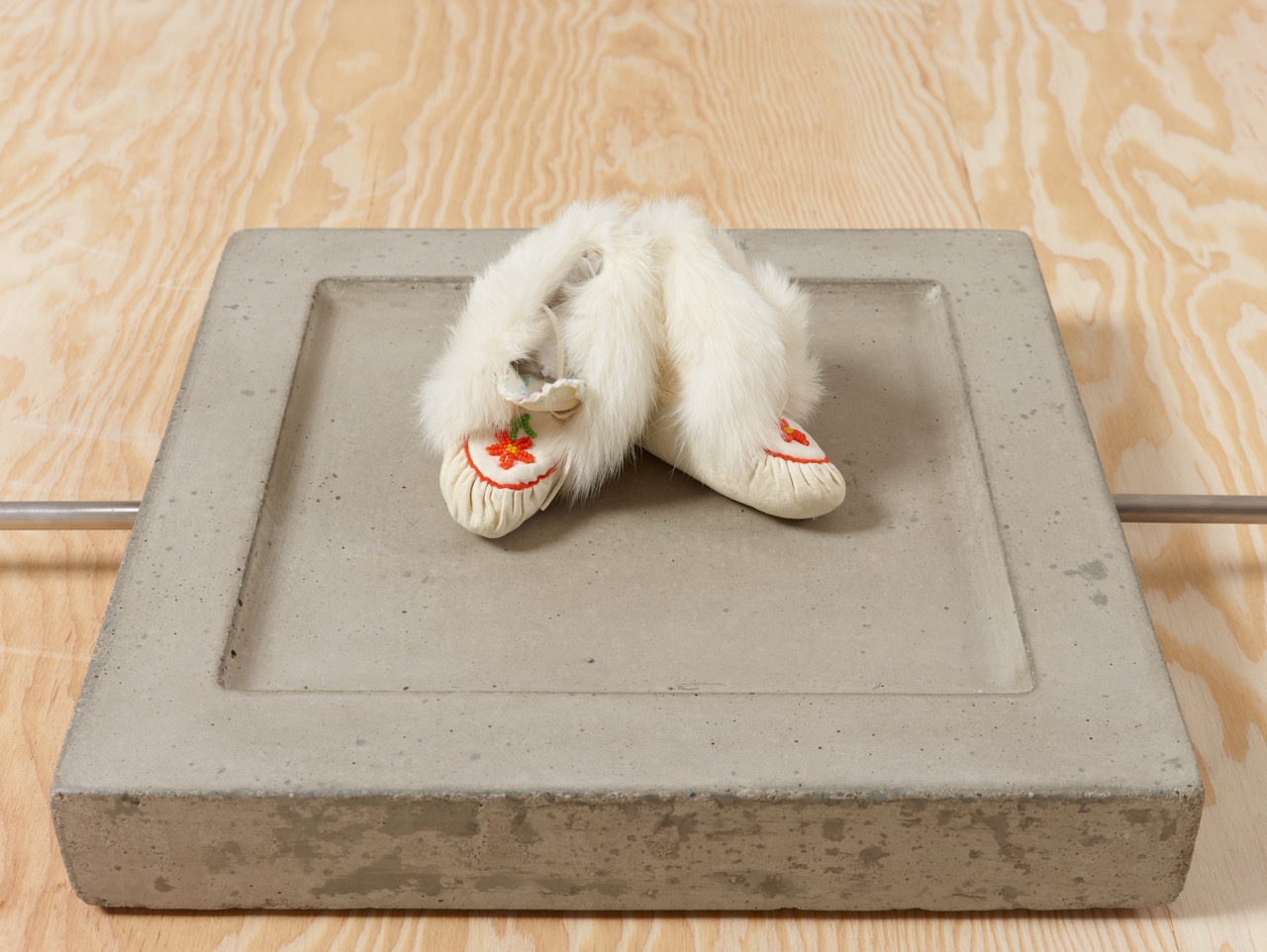SPECULATIVE APPARATUS 4 FOR THE WORK OF NOHKOMPAN | DUANE LINKLATER
Two light caribou hide shoes are carefully placed on top of a gray concrete stone. The shoes are covered in soft white rabbit fur and each one is decorated on the toe with a colorful beaded flower. This installation was composed by artist Duane Linklater, Omaskêko Ininiwak from Moose Cree First Nation. The artist lives and works in North Bay, a town in southern Ontario, near Toronto. With his practice he studies the North American Indigenous peoples, exploring their universe through different forms of art, such as sculptures, photographs, installations, videos, text works.
Linklater has a strong connection with his family and his Cree origins, an appellation referring to some Indigenous peoples live in North America. Speculative apparatus 4 for the work of nohkompan was conceived as a tribute to Ethel Linklater’s memory, the artist’s paternal grandmother who died in 2004, whose Cree name transliterates to nohkompan. Ethel Linklater, born and raised in a Cree tribe, was a very skilled craftswoman and trapper who personally get the materials to make her creations. According to Linklater, the value attributed to these artifacts did not really reflects the high skill of their creator. For this reason, the artist implements a conceptual operation: by placing and treating them as artworks, he puts them on a concrete pedestal, giving them a dedicated space. Speculative apparatus 4 for the work of nohkompan is not the only installation created by artist with his grandmother’s artefacts: his practice aims to question the categorization that divides art objects from functional and craft ones, as well as explore museological practices and structures.
The soft and warm appearance of shoes contrasts with the cold and solid material of the base which they are placed on, facilitating their abstraction from the context. The viewer is led, almost accompanied, within the emotional sphere of the artist. Each element of the installation acts as a reminder of the past, of a personal experience: the pedestal’s concrete is a reminder to that generations of artist’s family that have worked as labourers in cement and steel manufacturing industries; the particular floral motifs are decorations with peculiar and distinctive elements of belonging to local Cree tribes; even caribou hide and rabbit fur are an identity symbol of these Indigenous peoples who historically hunted and, until a few centuries ago, moved following the seasonal migratory flows of their prey.
The shoes were donated to Thunder Bay Art Gallery, a public art gallery located in Ontario, they are part of the permanent collection. The gallery’s mandate is to preserve and promote local Indigenous artists, with a focus on contemporary art. The artworks included in their permanent collection must be borrowed every time an institution or gallery wants to show them to the public. This is a loan model in order to preserve the ownership’s rights of local Indigenous tribes where the artwork was created.
Duane Linklater
Speculative apparatus 4 for the work of nohkompan, 2016
Concrete, stainless steel, 3 x 48 x 16 in. (6 x 122 x 41 cm), with Baby Boots, c. 1980, by Ethel Linklater, caribou hide, rabbit fur, beads, 4 x 4 x 2 in. (11 x 9 x 6 cm), collection of Thunder Bay Art Gallery. Collection of Tate Modern. Photo: Jeffrey Sturges. Courtesy of Catriona Jeffries, Vancouver. ©
17/05/2023

